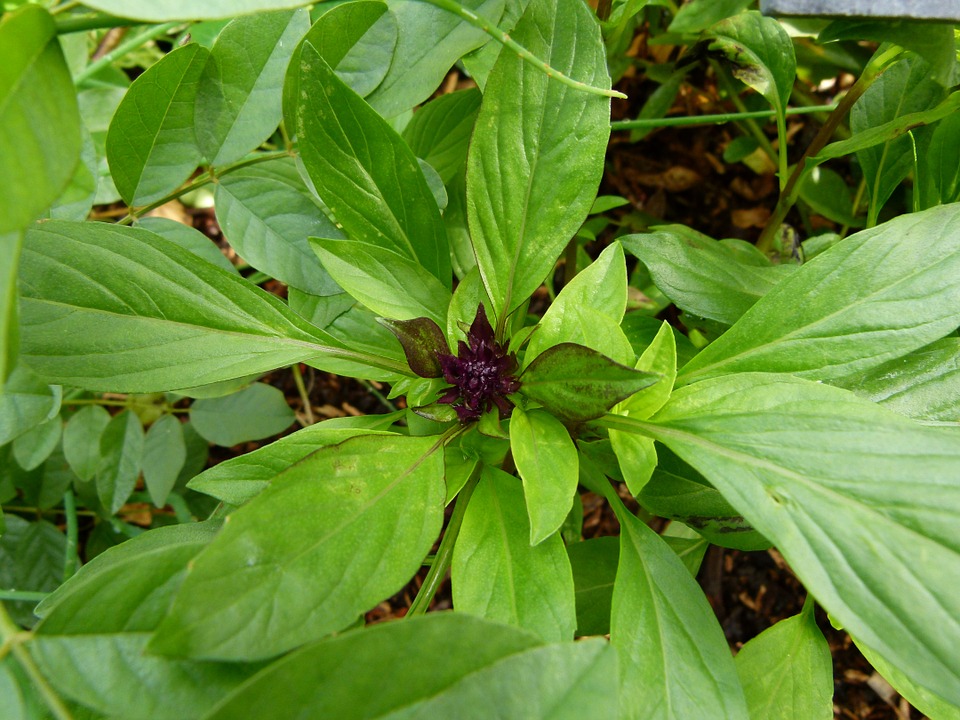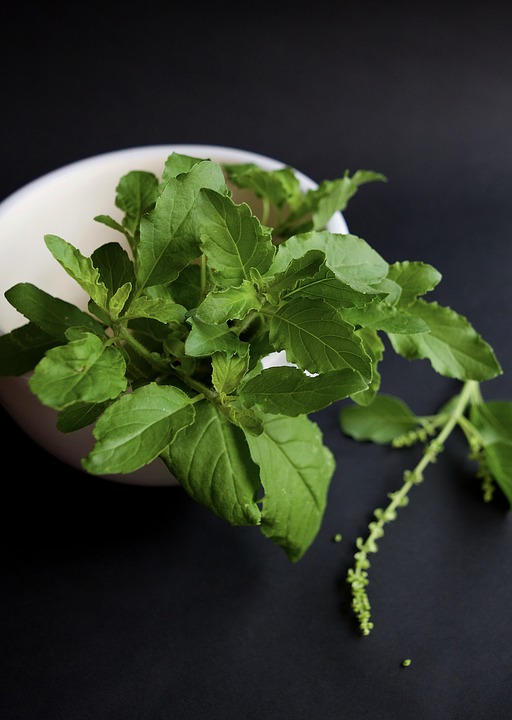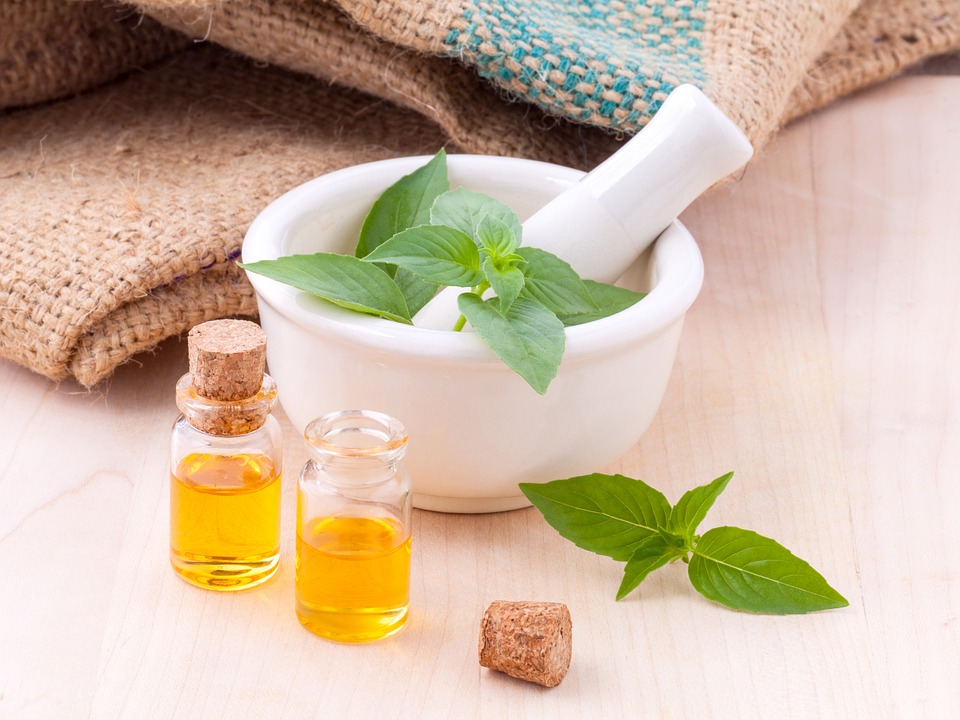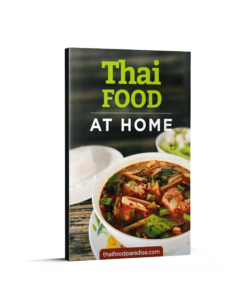A Guide to Basil in Thai Food

A variety of different types of basil are used extensively in Thai cuisine. My experience of basil before my first trip to Thailand was limited to its use in pesto, a famous green sauce used in Italian food.
It was to my surprise and delight upon exploring Thai food in depth that I found out about other types of basil that I never knew existed, each with their own unique taste, smell, and uses. This article is an attempt by me to explain the different types of basil used in Thai cooking.
What is Thai Basil?

Thai basil, or sweet basil, is a type of basil native to Southeast Asia that is used widely throughout Thai cuisine. It has a distinctive anise taste profile and restaurants often serve fresh bunches of it alongside noodle dishes or salads.
A famous Thai dish in which Thai basil prominently features is Chicken with roasted Chili Paste and Basil (Gai Pad Nam Prik Pao) or its alternative and in my opinion tastier sister version that uses clams instead of chicken.
You’ll also frequently get served fresh Thai basil leaves with laab, a famous salad originating from Isaan. If you want to cook with Thai basil, I would only recommend adding it at the end of the cooking process. It is really a herb that is best used to add freshness and fragrance to curries, soups, and salads.
What is Holy Basil?

Holy basil is a really pungent peppery type of basil that Thais use to make Pad Krapow, one of the most famous one-plate meals in Thailand. Pad Krapow is a personal favourite of mine and is something I order within a day or two of any trip to the Land of Smiles.
Krapow (กะเพรา) is the Thai word for holy basil. There are dozens of variants of Pad Krapow that use different sources of protein. I’ve eaten Pad Krapow with diced chicken breast, minced pork, crispy pork belly, and even century eggs. You can view my Pad Krapow recipe to find out how to cook this great dish and staple of Thai food.
You can identify holy basil as a tall and rigidly stemmed plant with purplish flowers and green or purple leaves. The leaves of holy basil are oval-shaped and they have quite jagged edges.
The main quality of holy basil is that enhances the heat of a hot and spicy dish. If you eat holy basil raw, it tastes very peppery. I recommend always cooking holy basil to tone down its intensity and properly integrate it with other flavours in your dishes. Holy basil likes the high heat of stir-fried dishes, but it also tastes nice in a special Thai curry known as geang pa (jungle curry).
What is Lemon Basil?

Lemon basil is yet another type of basil I had never encountered prior to visiting Thailand. I have vague memories of seeing it on Masterchef years ago but I could be making that up.
Anyway, as you can probably guess from its name, lemon basil is characterized by a delightful lemon fragrance and taste. Lemon basil leaves are quite similar to sweet basil and they have serrated edges, but the leaves tend to be narrower.
As for the culinary use of lemon basil in Thai food, it is a pivotal garnish for a quite delicious Southern style curry known as khanom jeen nam ya. Lemon basil is also an essential garnish for what could be called the Northern equivalent of the aforementioned dish, khanom jeen nam ngiao.
Nam ngiao is a personal favourite of mine that I miss every time I leave Thailand. The name of the dish comes from “dok ngiao”, which is a Thai term for the dried flowers of the red cotton tree. Talk about a far-out ingredient!
Lemon basil complements these Thai noodle soup dishes wonderfully, adding a gorgeous lemon flavor to intensely spiced sauces. You’ll also see lemon basil used in a vegetable and herb soup known as Gaeng Liang. It’s worth noting that Lao cuisine uses lemon basil much more abundantly than Thai food.
Well, time to wrap up this post now on the types of basil used in Thai food. For a brief recap, we have Thai basil, holy basil, and lemon basil as the three main basil types you’ll likely eat during a culinary trip to Thailand.
I lived in Thailand for a few years during my 20s during which time I fell in love with Thai food. Along with my Thai partner, I cook and eat tasty Thai dishes 3 or 4 times per week. I’m here to bring you recipes, Thai food tips, and suggested cookware for making Thai food.
